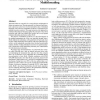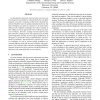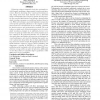87 search results - page 3 / 18 » Exploiting Instruction Redundancy for Transient Fault Tolera... |
ASPLOS
2006
ACM
13 years 11 months ago
2006
ACM
Transient faults are expected a be a major design consideration in future microprocessors. Recent proposals for transient fault detection in processor cores have revolved around t...
DSN
2006
IEEE
14 years 1 months ago
2006
IEEE
As chip densities and clock rates increase, processors are becoming more susceptible to transient faults that can affect program correctness. Computer architects have typically ad...
IEEEPACT
2008
IEEE
14 years 1 months ago
2008
IEEE
Technology scaling in integrated circuits has consistently provided dramatic performance improvements in modern microprocessors. However, increasing device counts and decreasing o...
APCSAC
2005
IEEE
14 years 1 months ago
2005
IEEE
Increasing microprocessor vulnerability to soft errors induced by neutron and alpha particle strikes prevents aggressive scaling and integration of transistors in future technologi...
ASPLOS
2012
ACM
12 years 3 months ago
2012
ACM
Future microprocessors need low-cost solutions for reliable operation in the presence of failure-prone devices. A promising approach is to detect hardware faults by deploying low-...



